The Berkshires Bowling Alley that Inspired "The Big Lebowski"
It’s been 36 years since the release of The Big Lebowski, the irreverent cult comedy by Joel and Ethan


One of 12 regional banks in the Federal Reserve System (the central banking system of the United States), The Federal Reserve Bank of New York is housed in 22-story edifice located on 33 Liberty Street. While it does boast an imposing footprint, the building can sometimes be overshadowed by the towering structures scattered around Lower Manhattan — that is until you notice its stately stature and realize that several of its windows are actually gated. That’s because The Federal Reserve Bank of New York — responsible for the Second District of the Federal Reserve System, which encompasses New York State, the 12 northern counties of New Jersey, Fairfield County in Connecticut, Puerto Rico, and the U.S. Virgin Islands — is reputedly said to hold the largest gold repository in the world.
While the Federal Reserve System (also called The Fed) is responsible for deciding monetary policy and serving as the banker for the U.S. government, the Federal Reserve Bank of New York is the place where monetary policy in the United States is actually implemented. Additionally, it handles international operations and the supervision and regulation of financial institutions. However, it’s most notable for being the largest Reserve Bank in terms of assets. After all, it stores monetary gold not only for governments, but also for foreign central banks and international agencies. If you’re wondering what that looks like, stay tuned as we delve into the secrets of The Federal Reserve Bank of New York, many of which we learned while on a tour of the building:
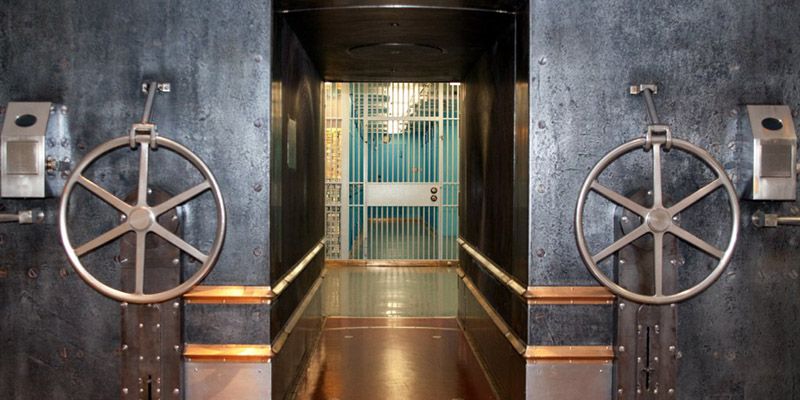 Image courtesy the New York Fed
Image courtesy the New York Fed
One of the last, and most anticipated stops of the tour, was the gold vault located in the basement of The Federal Reserve Bank of New York building. Located 80 feet below street level (and 50 feet below sea level), it holds approximately 7,000 tons of gold bricks, which total $250 billion altogether. According to our tour guide, each gold brick is worth roughly $640,000 in today’s currency.
The vault provides a secure location to store monetary gold at no cost to account holders. However, as previously mentioned, the New York Fed only provides this service to central banks, international organizations and governments on behalf of the Federal Reserve System. This means that none of the stored gold actually belongs to the Bank; rather, the New York Fed simply acts as the “custodian” or “guardian” for account holders, none of whom are private sector entities or individuals. To give you an idea of how much gold is actually stored there, consider the fact that by 1927, the vault contained approximately 10% of the world’s official gold reserves. The largest current account holds $54 billion.
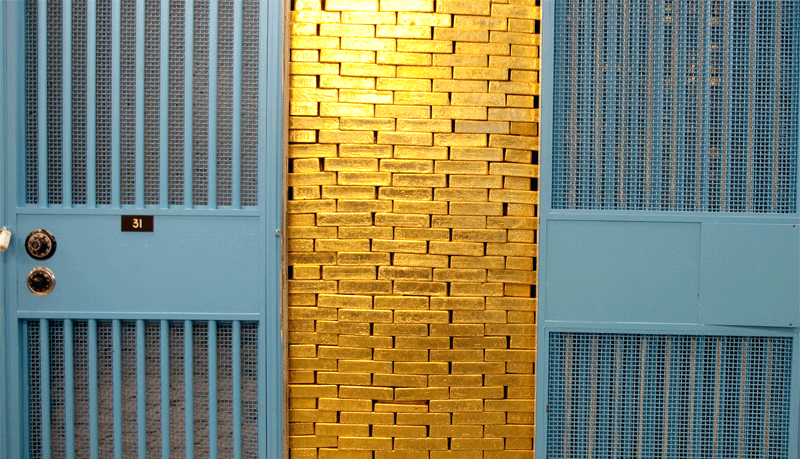
Image courtesy the New York Fed
Given the amount of gold that is stored in The Federal Reserve Bank of New York, the underground vault seems like an obvious target for ambitious thieves. Yet, no break-in attempts are known to have taken place — most likely due to the sheer amount of security measures taken to ensure that the stash is protected (more on that later).
However, if someone was ambitious enough to orchestrate a heist, the best point of entry would be to create a tunnel from the nearest subway station, which is located 30 feet above and 100 feet away from the vault. Doing so would require two months of drilling using the world’s most powerful drill that is equipped with diamond head. But even if someone miraculously was able to procure such a machine, the vibrations from the actual tunneling would be enough to alert security.
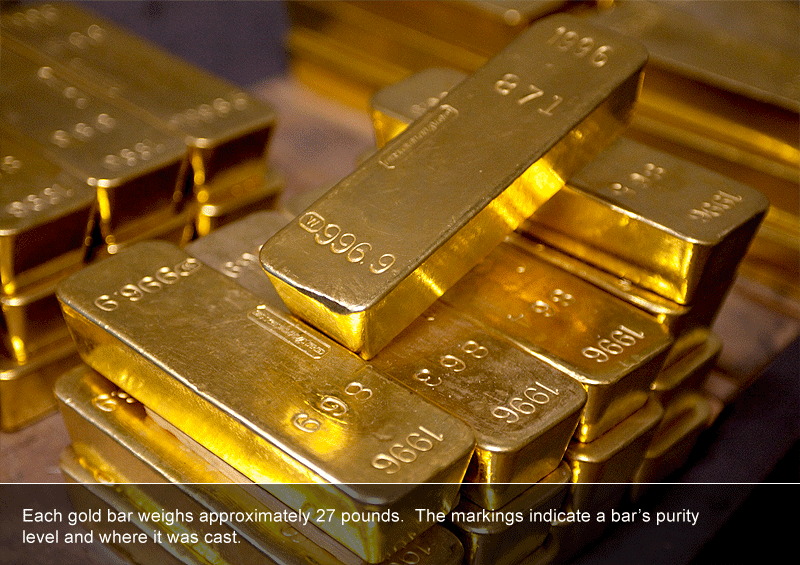
Image courtesy the New York Fed
The size of a gold brick is rather deceiving. Though no bigger than a water bottle, each brick weighs roughly 27 pounds due to the high density of gold. That’s why the handlers at the vault wear toe covers made from magnesium: it’s an incredibly light, but strong metal, which has also been used to construct rocket ships.
Behind the gates of the gold vault, you can spot exactly wear gold bricks were accidentally dropped by looking for cracks and indents in the floor. Another fun fact we learned during the tour is that no gold bar is exactly the same, or 100% pure. That’s because gold is soft and quite malleable, so the bars are formed by mixing gold with small amounts other metals (copper, silver or platinum), and then stamped with information about their production. For example, a set of numbers can identify the exact melt (the molten gold from which a bar is made) and purity of the brick, and a seal also identifies were the gold was cast. Given this variability, gold deposits are carefully weighed, and not considered interchangeable, which means account holders receive the exact bars they initially deposited when withdrawing.
Extreme lengths are taken to ensure that gold is secured after it is transported from street level to the vault. Firstly, massive steel-reinforced concrete walls surround the space, which is monitored on a 24-hour basis by security cameras and motion sensors. Beyond that, the vault is continuously looked after by the armed Federal Reserve police force.
However, one of the most notable features of the New York Fed’s multilayered security system is its nine-foot-tall and 90-ton steel cylinder that protects the only entry into the vault. Sitting within a 140-ton steel-and-concrete frame, the cylinder rotates 90 degrees to form an entryway. When closed, it also drops two centimeters to form a watertight and airtight seal. The effect is similar to pushing a wine cork down into its bottle. The shuttered vault is so secure that if a person were to be trapped inside, he or she would only have enough air to survive for 72 hours (or so we’re told). This, of course, is only theorized as no one (luckily) has been trapped inside yet.
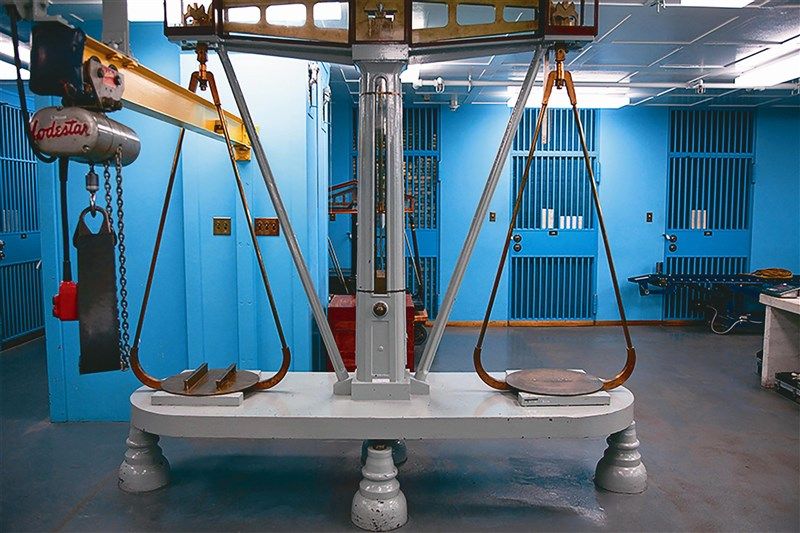
Image courtesy the New York Fed
In addition to the cylinder, the security of the gold lies in the hands of the “control group,” comprised of two members of the New York Fed staff and one member of the New York Fed internal audit staff. These three people have to be present whenever gold is moved or a compartment (of which there are 122) is opened. The individual compartments are also secured by a padlock, two combination locks and an auditor’s seal.
For maximum security, no one person knows all the time and combinations to unlock the compartments, which means it requires three people to get into the stash.
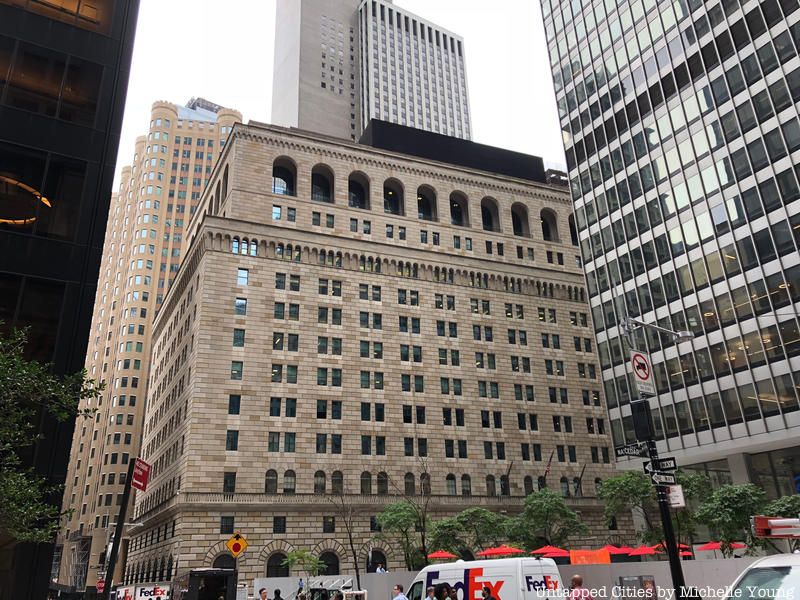
As of 2015, the gold vault inside The Federal Reserve Bank of New York was home to approximately 508,000 gold bars, weighing a total of 6,350 tons. (Let us reiterate the fact that each gold bar weighs a whopping 27 pounds.) With that much weight to consider, it was important for the New York Fed to be built on an extremely sturdy foundation. Geological samples were taken to ascertain the best location to construct the vault, which was ultimately built on top of Manhattan bedrock.
The importance of this foundational support cannot be emphasized enough: as we learned on the tour, there’s a bank in London that doesn’t stack their gold higher than five feet, and routinely moves their stash to ensure that the gold doesn’t sink and create an indent in the floor.
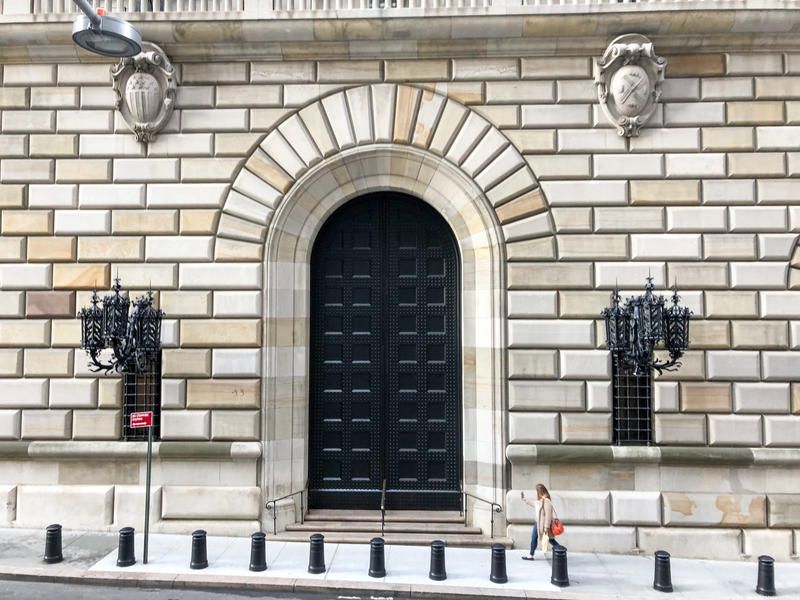
All this talk of gold can easily distract a visitor from the architectural details inside the 22-floor, limestone and sandstone headquarters of the Federal Reserve Bank of New York, which is reminiscent of architecture from the Italian Renaissance period. However, the stunning ironwork inside is not to be missed.
Following an architectural competition for the construction of the building, talented metal worker and blacksmith, Samuel Yellin, presented sketches of ornamental ironwork to winning architecture firm, York and Sawyer. His bid was accepted, but the task to cover the bank with such flourishes was monumental. Yellin doubled the manpower at his workshop to over 200 helpers so that the project could be completed on time. According to the New York Fed Twitter, Yellin crafted 200 tons of ironwork into the building, including teller window fixtures — no two of which are alike —that feature the heads of animals like giraffes, alligators and dragons. There are also whimsical details like smiley faces on door handles.
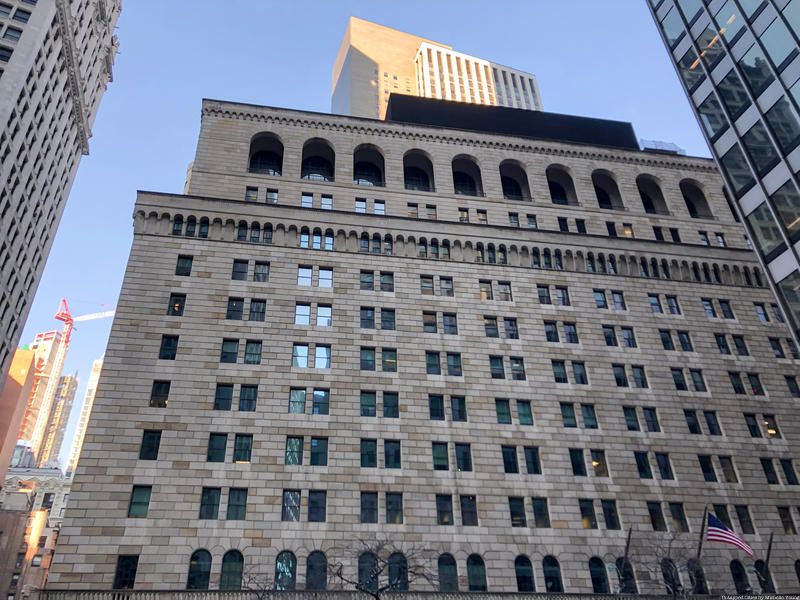
Aside from its iconic ironwork, the Federal Reserve Bank of New York is home to a stunning vaulted ceiling, featuring tile work from Rafael Guastavino. The famed though now obsolete vaulting technique, used in over 200 historical structures in the city, can give any New York City dweller or tourist a new appreciation for the artisanal origins found in architecture.
Like many of New York City’s cultural influencers, the family members who founded the eponymous Guastavino Company were immigrants. Rafael Guastavino, Sr. (1842-1908), born in Valencia, Spain, and trained as an architect with a Master Builder degree, brought his then nine year-old son Rafael Guastavino, Jr. (1872-1950), also Spanish-born, to the United States. The “Tile Arch System” is one of 24 patents that the Guastavino father and son team devised over time while running the family business. The technique is used to create vaulted arches that consist of layered terra cotta tiles arranged in a zig-zag, most often, herringbone pattern and sealed with specialized cement. The structures that incorporate this architecture are also designed to be fireproof and incredibly stable. Here’s a look at other locations in New York City with Guastavino tiles.
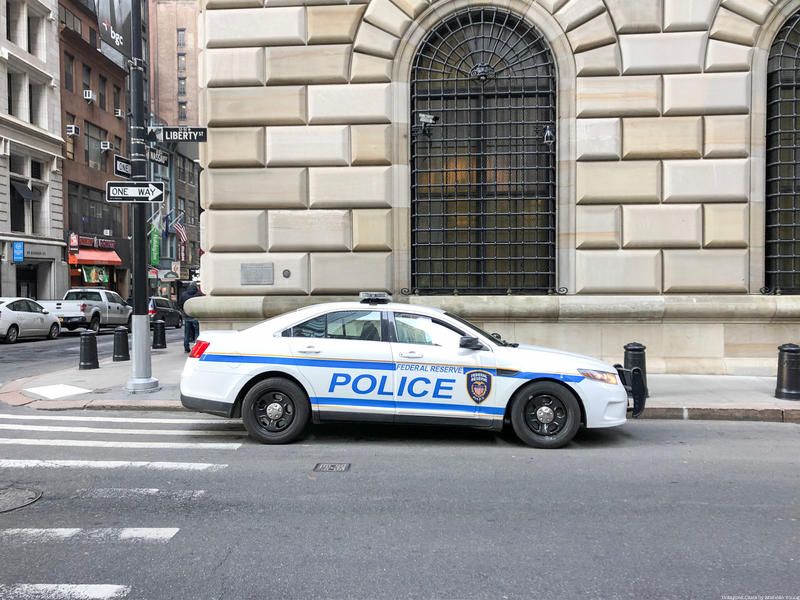
On a daily basis, Federal Reserve Banks handle billions of dollars in currency. Within the Second District, served by The New York Fed, 19 million notes are processed each day at the East Rutherford Operations Center (EROC) in New Jersey, where robots are used to carry and transport cash. The process begins when banks deliver both coin and paper currency to the state-of-the-art facility using armored carriers. Following verification of the contents, the currency is fed into high-speed processing machines, which count each note at an average rate of 74,000 notes per hour, and bundle them into packages. This is also where the quality of the notes is inspected.
If a bill is unfit to be recirculated — if it’s too old or unable to be accepted into a vending machine, for example — it’s cut into “confetti-like shreds.” Destroyed currency will be replaced with new notes, each of which have an expected life expectancy. (A $1 bill is expected to survive 5.9 years, while a $100 bill has a life expectancy of seven years.) At the end of our tour, we were even give a pack of this shredded money, which contained 50 to 100 bills of varying denominations.
In addition to sorting currency, The EROC also tags suspected counterfeits, which are stamped and forwarded to the U.S. Secret Service, the Department of Homeland Security agency that maintains the integrity of the nation’s currency.
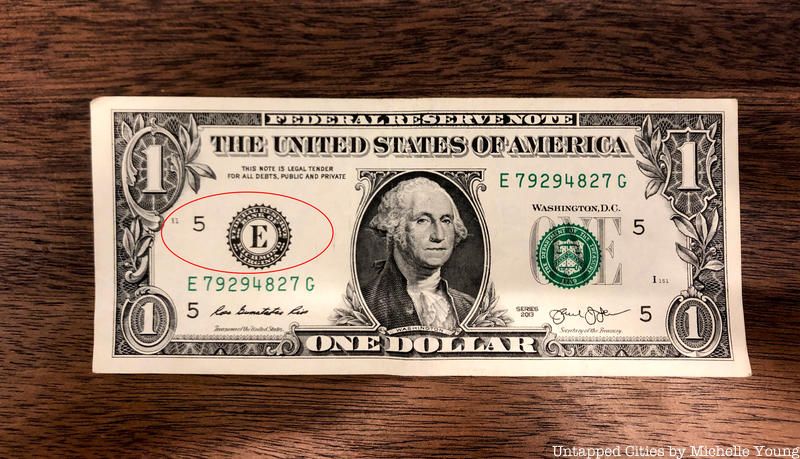
This dollar bill was printed at the Richmond Federal Reserve
Across the nation, 12 Federal Reserve Banks are responsible for printing and helping to circulate money in the U.S. By examining your bills, you can actually figure out precisely which bank your money came from, as we learned on our tour.
Just grab a bill and look for the letter in the Federal Reserve Seal to the left of the portrait of the president. A corresponding Federal Reserve District Number code can also be found in various locations. For example, a bill with the number 12 will have the letter L (the twelfth letter in the alphabet), which means it appears on the balance sheet of the Federal Reserve Bank of San Francisco. Click here to see which cities each letter are associated with.
Next, check out 6 Underground Vaults of NYC: Federal Reserve Gold Vault, Archaeological Repository, Van Cortlandt Park
Subscribe to our newsletter